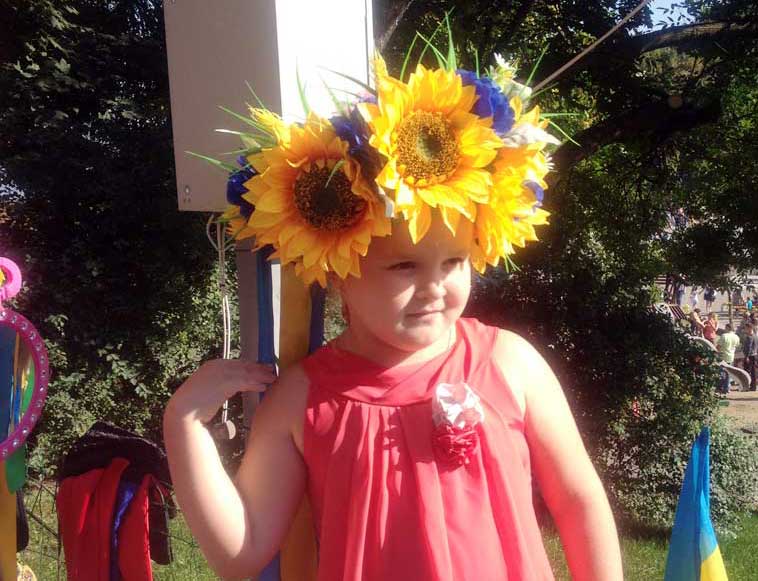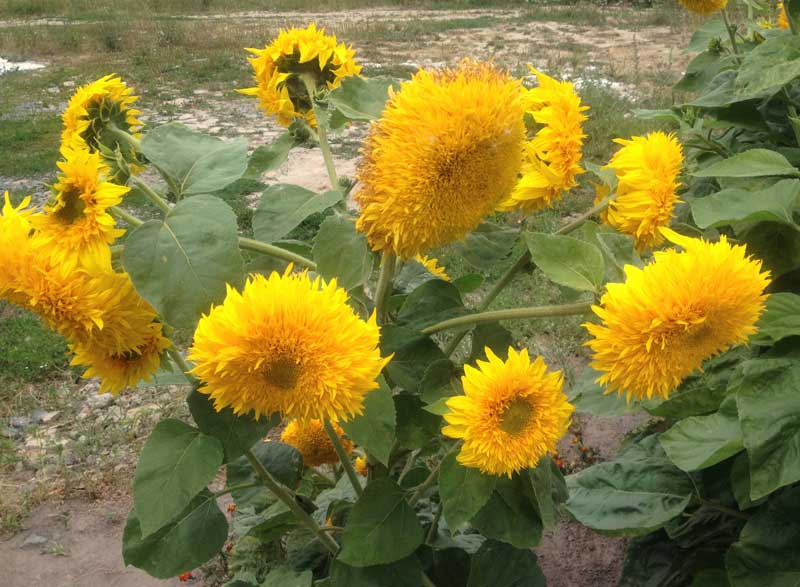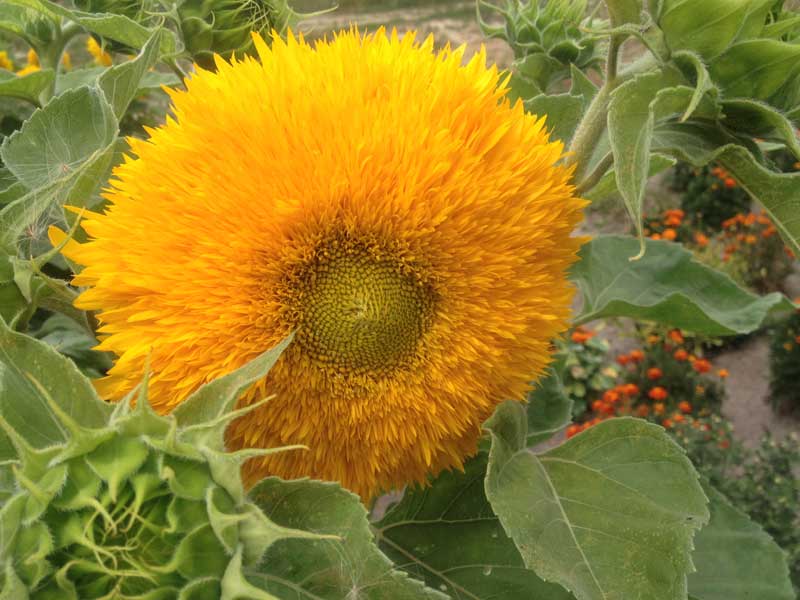Why is the Sunflower the National Flower of Ukraine?
Thanks to the director of our affiliated Ukraine office, Luba Rudenko, for inspiring us to share the story of Ukraine’s sunflowers.

Ukrainians have always loved flowers. Flowers fill the yards of village houses, and are woven into wreaths (venki) for girls to wear at celebrations. They’re embroidered on fabrics and painted on walls, wooden furniture, and household items in a folk art called petrykivka, added to UNESCO’s Representative List of the Intangible Cultural Heritage of Humanity.
Sunflower Love
Sunflowers (sunyashniki) are especially loved in Ukraine, where golden fields of them face the sunrise in the east. They are Ukraine’s national flower, and in folk imagery represent the warmth and power of the sun, which was worshipped by pre-Christian Slavs.

In a strange twist, the fact that Ukraine is one of the world’s largest producers and exporters of sunflower seeds and sunflower oil is partly due not to pagan practices, but to those of the Orthodox Church.
Sunflower Backstory
Sunflowers made their way to Ukraine through the efforts of the early explorers of North America, where it was one of only a few native food crops (along with squash, blueberries and pecans). Seeds were brought back to the old world, and found to grow well in hot, dry places with rich soil, such as the “Black Earth” regions of Ukraine.

The Orthodox Church comes into the story because during Lent, believers were not supposed to use butter or lard for cooking. Since sunflower oil was a fairly recent arrival, there were no specific restrictions on its use. Sunflower culture took off. By the 1800s, there were big fields of them all over Ukraine and western parts of Russia, and people were chewing the seeds and spitting out the shells.
Sunflower Snacks
Later, Soviet plant breeders developed a line of sunflowers that produces much more oil, and oil of a type that doesn’t go bad when it’s heated to a high temperature. In the 1990s, when the world began to turn away from trans-fats, the new sunflower oil quickly became popular– especially for frying potato chips – and even more fields were planted.

Today this versatile crop covers huge swathes of central Ukraine, bringing joy, beauty, symbolism, and snacks to the people of Ukraine – and the world – by way of the ever-powerful energy of the sun.

Travel to Ukraine with MIR
MIR has 30 years of travel experience in Ukraine and has an affiliate office in Kyiv. We have a roster of contacts that can take you to places that you didn’t even know you wanted to go. Our full service, dedication, commitment to quality, and destination expertise have twice earned us a place on National Geographic Adventure’s list of “Best Adventure Travel Companies on Earth.”
You can experience the beauty and rich folk traditions of Ukraine on MIR’s small group tour, Belarus, Ukraine & Moldova, or on the private itinerary Essential Ukraine. You can also create your own Ukrainian exploration with the help of our custom & private specialist.
Update: Feb 2022: Trips to Russia, Belarus and to Ukraine have been canceled for 2022. We will continue to pray for peace and to support organizations providing humanitarian aid to Ukraine, including the following–we hope you will join us.
International Rescue Committee, The International Committee of the Red Cross, Save the Children, The UN Refugee Agency, World Central Kitchen, Direct Relief, Mercy Corps the United Nations World Food Program and Doctors without Borders are just a few of the organizations doing essential work in this time of great need.








